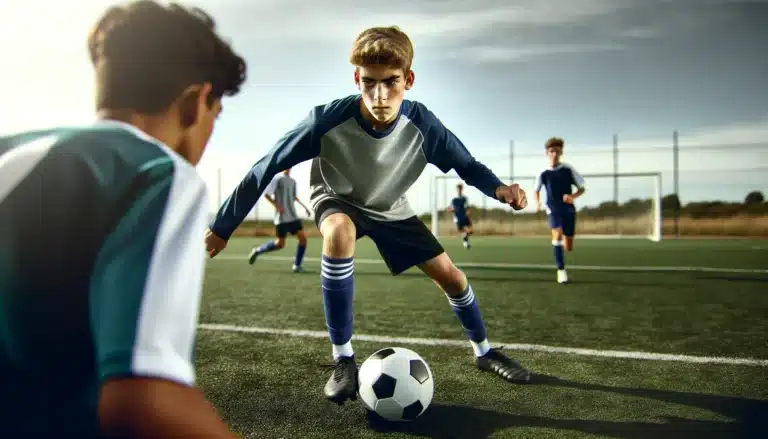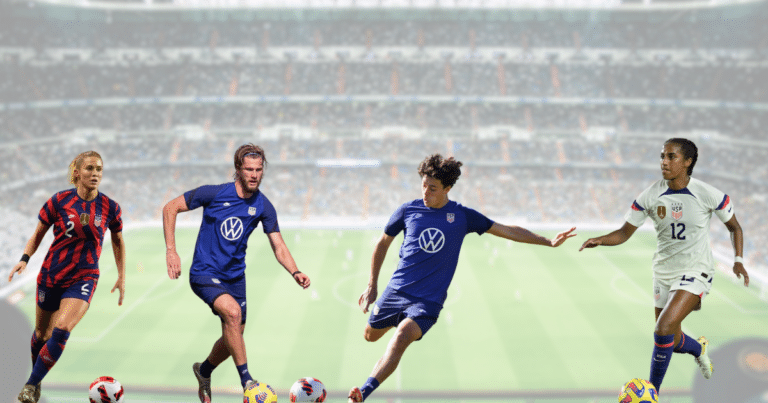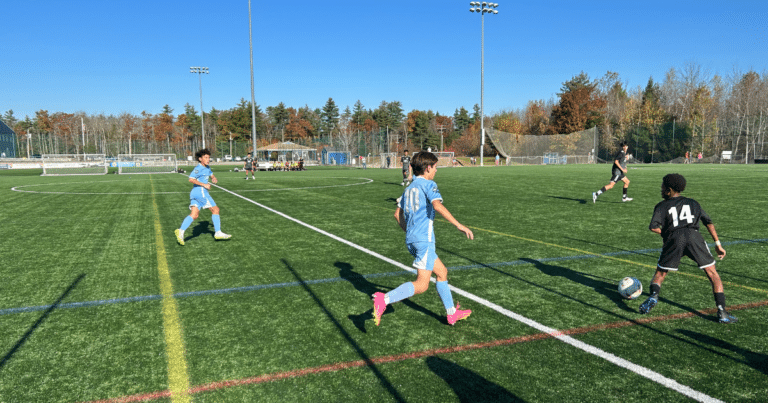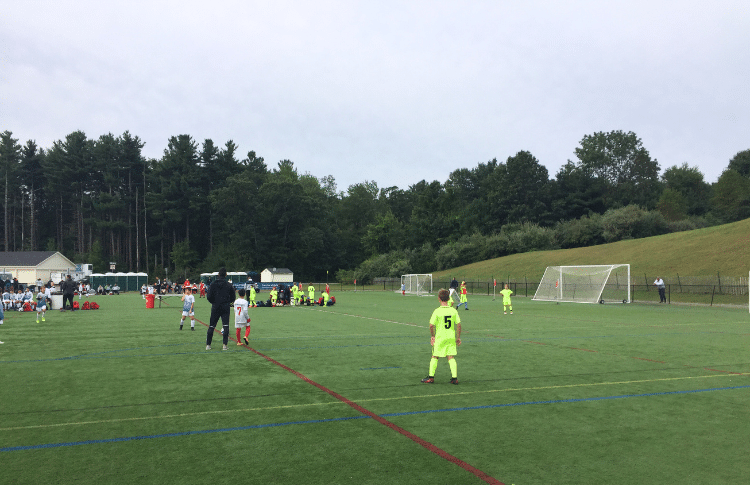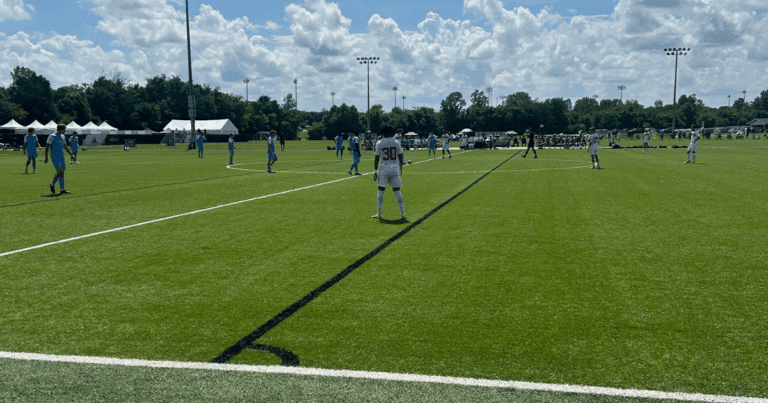Soccer Positions: The Ultimate Guide
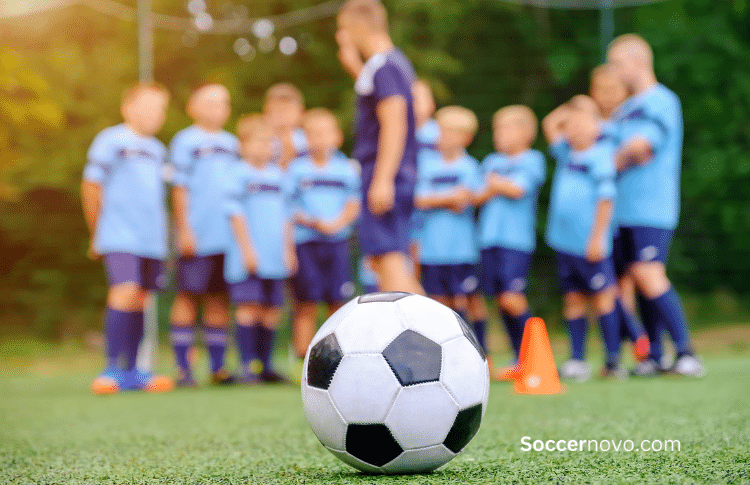
Trying to figure out the different soccer positions and roles can be confusing. Coaches like to deploy different tactics so the positions might change from team-to-team and by game.
Key Takeaways From This Article:
- Positions are determined by the team’s formation.
- Traditionally, each position is tied to specific soccer jersey numbers.
- As a youth soccer player, it’s important not to get pigeon-holed into a specific position.
In this article, I try to untangle it all! Let’s get into it.
Soccer positions can be divided into four main groups:
- Goalkeeper
- Defenders
- Midfielders
- Forwards
Each of these groups is assigned a specific position with it along with primary responsibilities.
Why Should I Know Different Positions?
Imagine yourself as a bird flying over a soccer field and you can visualize these three distinct areas. The field can be divided into thirds.
- Defensive Third
- Middle Third
- Attacking Third
The area of the team’s goal-side is where the defenders will usually be stationed.
The middle of the field will be protected by (you guessed it) the midfield.
Towards the opponent’s goal, you’ll find the forwards.
Here’s a visual illustration of it.
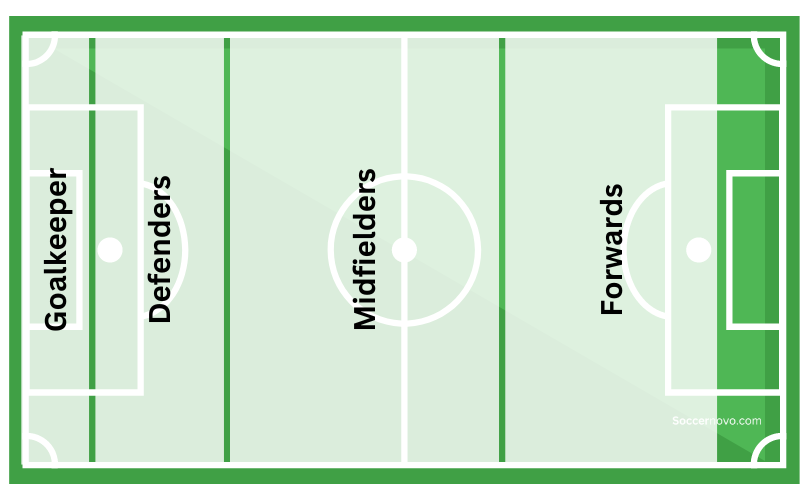
Each position is also given a number and is often shown on the back of the player’s jersey.
What Are the Soccer Positions by Numbers?
Historically, a number has been associated with each position. Sometimes you’ll hear from the sidelines, “My kid plays the #10”, which usually means he’s a central attacking midfielder.
Here are the numbers you should be accustomed to hearing about:
1 – Goalkeeper (GK)
2 – Right Fullback (RB)
3 – Left Fullback (LB)
4 – Center Back (CB)
5 – Center Back (CB)
6 – Central Defending Midfielder (CDM)
7 – Right Winger (RW)
8 – Central Midfielder (CM)
9 – Striker (S)
10 – Central Attacking Midfielder (CAM)
11 – Left Winger (LW)
Now, let’s break down each position and their responsibilities.
What Are the Defensive Positions?
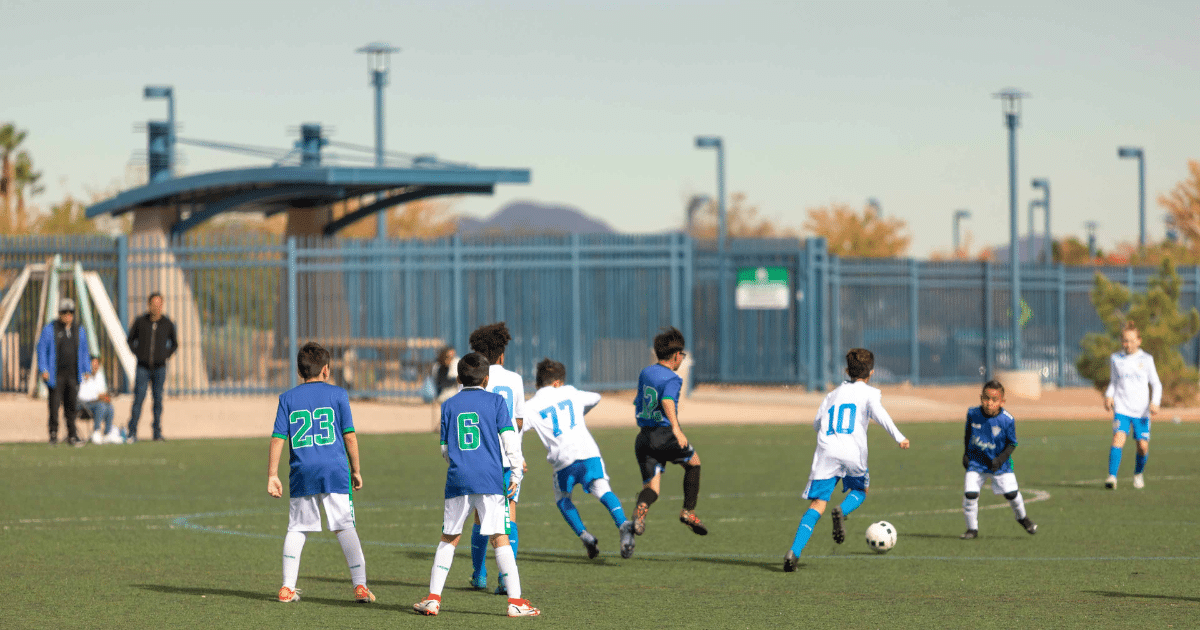
Goalkeeper #1
You probably realize the value of a goalkeeper even if you’re entirely new to the game! They have a huge responsibility and are considered the last line of defense.
The primary responsibility of the goalkeeper, or “keeper,” or “goalie” is to prevent goals from being scored by the opposition. Easy (and hard) as that!
For their duties, keepers have special privileges which allow them to use their hands. However, they are subject to the no-hands restriction once they leave the box or if a ball is passed back to them by their teammate.
As soon as the ball gets into the defensive third, all eyes are on the goalkeeper, who is known for making good decisions and reacting quickly.
Right #2 and Left #3 Fullback
The right and left fullbacks play the role of the field’s rear defenders. They play on the edge of the field and float closer to the center when necessary.
The ability to play one-on-one, make tackles, and make technical passes are the major strengths of any fullback.
Maintaining formation with the offensive line requires a high rate of speed and field awareness, which is also needed for fullbacks.
An elite fullback will start a counter-attack for their team by finding a midfielder with space in front of them. They can flip the team’s switch from defensive to offensive with a couple of key plays.
Center Back #4 & #5
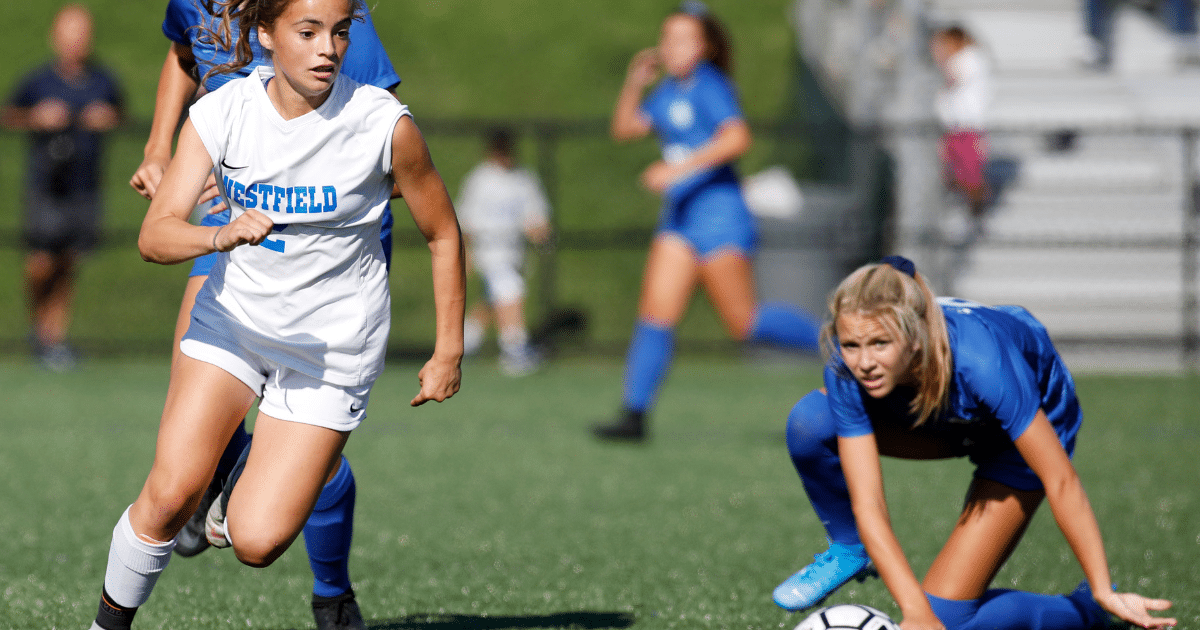
Next up is the center back position. A center back is sometimes called a stopper.
This player is stationed in the center of the field, at the far back of the defensive line.
A center back’s job is similar to the fullbacks…to protect their end of the field from the opposition’s offense.
Two center backs are sometimes playing together. For example, in a 4-4-2 formation, there will be two center backs lined up with two fullbacks on the edges.
A center back must possess strong intangible skills such as leadership, steady emotions, and strong communication.
Sweeper #5 (for certain formations)
Remember the sweeper? This is a rare and “antiquated” position. A professional team will typically feature two center backs instead of a sweeper. But, youth teams still use a sweeper depending on what formation they line up in.
A sweeper is a defender who sits back from the defensive line and clears the area of any incoming balls.
These players are usually multi-positional dynamos with a high IQ who can lead their teams.
What Are the Midfielder Soccer Positions?
Central Defending Midfielder #6
The central defending midfielder (CDM) can also be labeled as a “holding midfielder”.
Positioned between the defensive line and the attacking players, this player plays in the middle of the field to intercept passes and advance the ball on counter-attacks.
The ideal player for this role is someone who can calmly control the ball, make quick decisions, and is defensive-minded.
Center mids are great at making the game messy defensively.
Central Attacking Midfielder #10
A central attacking midfielder (CAM) is typically the playmaker of the team. Whether it’s setting teammates up or scoring themselves, the CAM position is a hybrid of a midfielder and striker.
The primary skills required are a combination of technical, tactical awareness, agility, creativity, and natural determination. The quality of this position can be the difference between winning and losing soccer games.
In addition to passing and scoring, the central attacking midfielder must provide defensive coverage when necessary. They must be able to anticipate passes and make hard tackles in the middle.
Right #7 and Left #11 Wingers
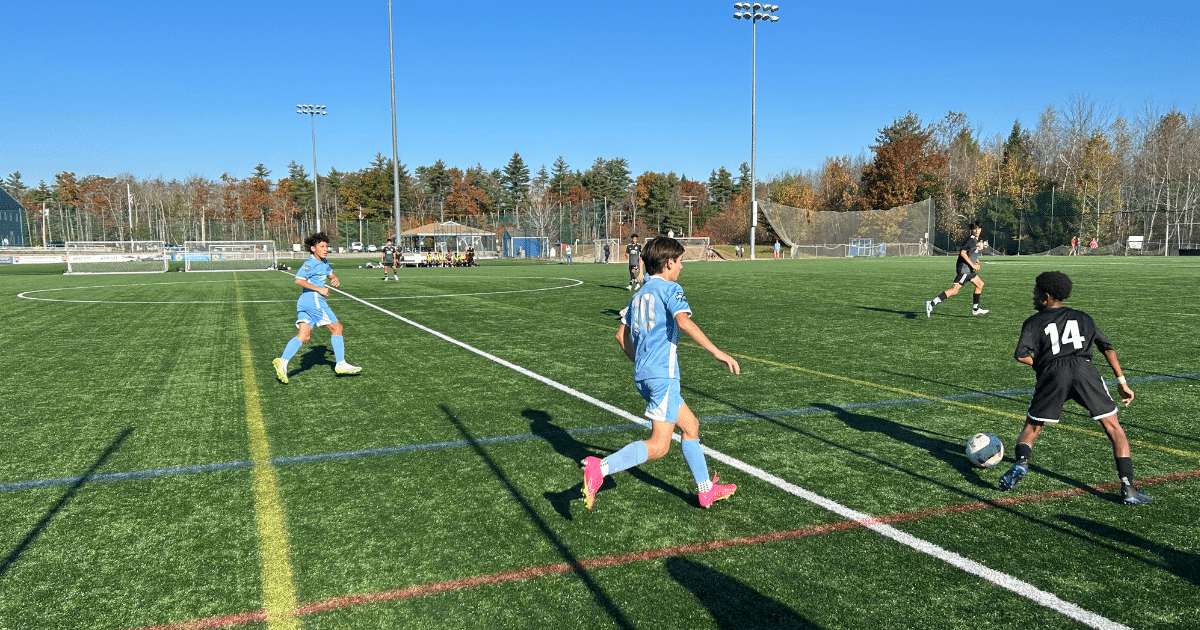
The left and right midfielders (oftentimes called wingers) are located near the two sidelines of the field (also called flanks).
The role of a winger in soccer is to provide width and attacking options to the team by taking on defenders and getting crosses into the box.
Wingers play an important role on offense and defense. The position requires great stamina, one-on-one skills, and passing abilities.
In addition to traditional wingers, there are inverted wingers in more modern day formations.
These players line up on the opposite side of their strong foot. For example, an inverted winger who is lefty would line up on the right side so they can cut in with their dominant foot and open up more scoring opportunities for their team.
Center Midfielder #8
The center midfielder (CM) is one of the few players on the pitch who is expected to make an impact offensively as well as defensively.
Central midfielders require incredible levels of stamina on the soccer field.
The CM’s role typically requires foresight since they are responsible for distributing the ball to the right player at the right moment.
While it’s not always the case, CM’s often serve as team leaders and can influence the style of play.
Ball control, tackling, passing, work rate, and leadership are soccer skills required to excel in this position.
What Are Forwards in Soccer?
Striker #9
As the name implies, strikers are players that are stationed in the forwardmost positions, closest to the goal of the opposing side.
Their major role is to score goals and set up teammates for goals. When not in control, forwards may help defend by pressuring the other team’s defenders and goalie.
The striker needs a combo of quick feet and a strong body to wear down defenses.
Strikers will frequently need to keep possession of the ball in one-on-one situations. They need to be able to know when to take a defender on, when to lay it off and when to hold possession.
Soccer Skill Sets for Each Position
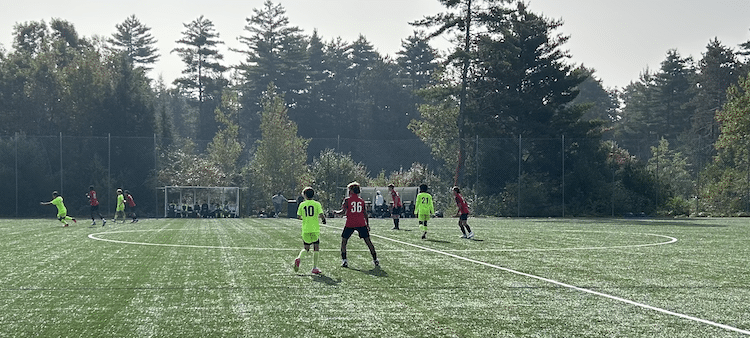
When a team works in unison with each other, great things can be accomplished. At the same time, to be successful in an individual position, it helps to have these qualities.
Goalkeeper
- Tough and gritty
- Great field awareness
- Excellent hand-eye coordination
- Quick reflexes
- Clear communication
Defenders
- Tough and able to make clean tackles
- Resilient and calm under pressure
- Good passing skills
- Confident
- Ability to anticipate
Midfielders
- Creative
- Have great speed, agility, and stamina
- Confident and not afraid to make mistakes
- Great technical abilities
- Calm under pressure
- Be solid offensively and defensively
Forwards
- Good ball control and first-touch
- Play with both feet
- Beat players in one-on-one situations
- Be able to hold the ball
- Be able to shoot with power and accuracy
How Do I Select My Position?
Not sure what soccer position is right for you? For the younger generation, it is important to try them all! As players get older, they will naturally lean toward a position based on their skill set.
Here are a few questions you may want to ask yourself…
- Would I rather score a goal or stop a goal from being scored?
- What’s my favorite thing about soccer?
- Am I an aggressive player or do I prefer to support others?
- Do I despise any position? Avoid it if you don’t like it.
- Do I get anxious when I have the ball or a scoring opportunity?
- Do I have the stamina to run the length of the field for 60-90 minutes?
- Do I have great reflexes and anticipation to see where the ball is going?
- In my current position, am I having fun?
What is the Best Soccer Position?
The best soccer position depends on various factors such as the player’s physical attributes, skill set, and the team’s tactics.
Honestly, only you will know. Naturally, as you play more, you’ll gravitate towards a position.
For example, a player with good ball control and dribbling skills may be better suited to play as a forward or winger.
A player with strong defensive abilities may excel as a center-back or defensive midfielder.
A player who is comfortable with taking risks and making creative moves may do well as an attacking midfielder.
Another important factor to consider when determining the best soccer position is your current and potential physical attributes. For example, a tall and strong player may be better suited to play as a defensive back or striker, while a smaller and more agile player may excel as a winger or central midfielder.
Ultimately, the best position for a player depends on their strengths, the team’s needs, and physical attributes.
Word of Advice for Soccer Positions
From the goalkeeper to the striker, every player on the field contributes to the team’s overall success.
Some positions need high levels of stamina and strength, while others call for exceptional one-on-one abilities.
What makes soccer so entertaining to watch is the players’ ability to work together as a team.
I think it is very important to try new positions when you’re younger. As you age and develop more soccer skills, you’ll find a position that is more aligned with your strengths.
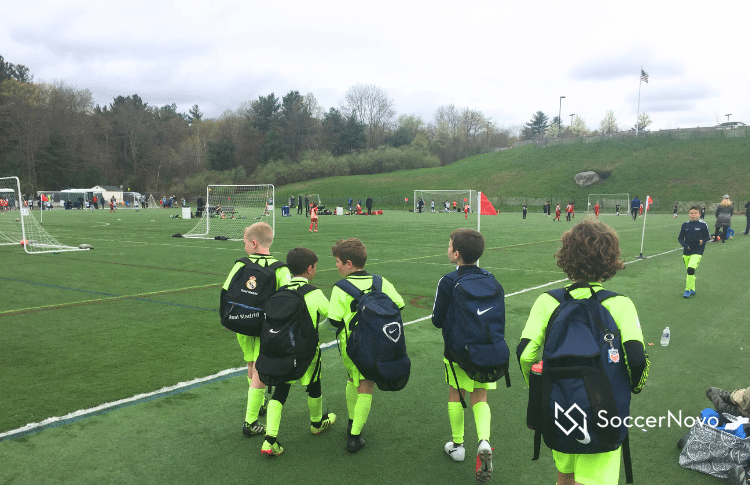
In my years of coaching, I’ve seen many kids transition from defender to striker. At the same time, I’ve also seen talented goalies at age 9 having to pivot into another sport because they lacked the height.
While you’re young, it’s important to have a growth mindset. Continue to study your position, refine your ball skills, be open to new opportunities, and have fun!
Frequently Asked Questions
There are 11 positions on a soccer team.
The main difference is the location on the field. Wingers are positioned on the sidelines of the field while a striker is more central.
If you are tough, have great hand-eye coordination, and are calm under pressure, playing goalie may be a great position for you. I think being a goalie in soccer can open many more doors for the right player since most players want to play the other positions.
I recommend players explore different positions at a young age. After they turn 12 or so, they will naturally play one or two positions.

Written By: SoccerNovo
SoccerNovo is an independent youth soccer media brand built to help parents, players, and coaches better understand the game and the pathways available in U.S. soccer. Our mission is to make youth soccer simpler, clearer, and more accessible for everyone involved in it.
Let’s connect


